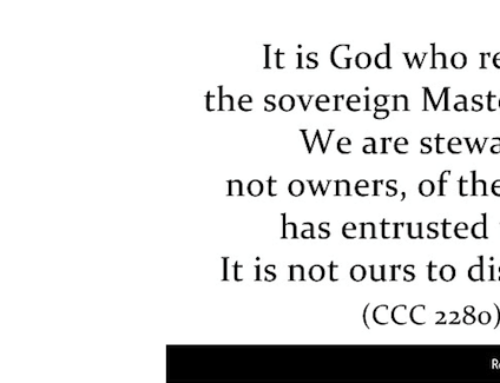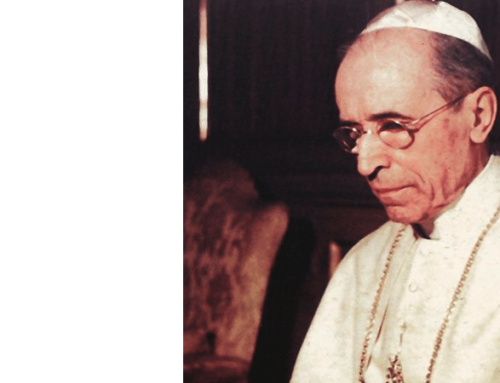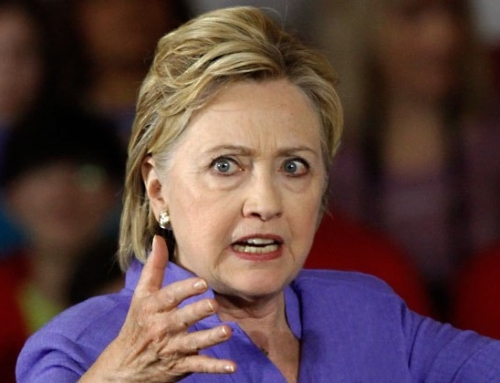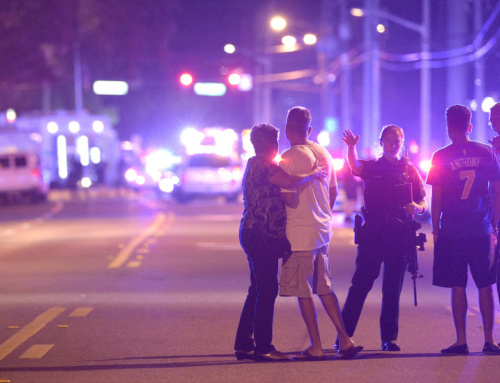By Bill Donohue
This article was originally published by CNSNews.com June 27, 2016.
In 2012, Harvard professor Karen L. King told the world that we need to rethink Jesus’ alleged celibacy. In all likelihood, she concluded, Jesus had a wife.
Her evidence? She was in possession of a fragment of papyrus that was inscribed with the words, “Jesus said to them, ‘My wife … .'” In 2014, her article on this subject, “Gospel of Jesus’s Wife,” was published in the esteemed Harvard Theological Review. Now she reluctantly concedes that her finding is likely a forgery.
She really didn’t have much choice. The July/August edition of the Atlantic magazine offers an investigative account on the owner of the papyrus, Walter Fritz: The man is a fraud, and so is his “evidence.”
Right from the get-go, there were several notable observers who smelled a rat. Among those not fooled was the Vatican. Right after King floated her story about Jesus’ wife, the Vatican newspaper, L’Osservatore Romano, labeled her tiny swath of papyrus an “inept forgery.” The newspaper’s editor, Gian Maria Vian, dismissed it as “a fake.”
When King went public in 2012 about her finding, she was cock-sure that she was right. Jesus’ reference to “My wife,” she said, was so clear that those words “can mean nothing else.” She also boasted that “this is the first unequivocal statement we have that claims Jesus had a wife.” When asked if ink tests may yet prove her papyrus scrap a fraud, she replied that more likely the tests “will be the cherry on the cake.”
As it turns out, there is no cake, never mind a cherry. What we have is a mess—one that she created. King showed her arrogance again when she asserted that her little fragment rose to the level of an “unequivocal statement.” If it were “unequivocal,” she wouldn’t be walking back her remarkable claims.
Moreover, her conclusion that the words “My wife” are not open to interpretation is rather curious coming from an academic: higher education these days denies the existence of truth, subjecting the plain words of a text to constant deconstruction. So why, all of a sudden, should her account be considered definitive?
King is not the only one to eat crow about her Jesus’ wife story. Roger Bagnall teaches at New York University’s Institute for the Study of the Ancient World. In 2012, after looking at the images of the papyrus with his colleagues, he said, “we were unanimous in believing, yes, this was OK.” He was confident it was not a forgery. “You’d have to be really kind of perversely skilled to produce something like this as a fake.”
Bagnall was duped. So was Princeton’s AnneMarie Luijendijk, a professor of religion (King served on her doctoral dissertation committee). She dug herself in deep when she exclaimed, “It would be impossible to forge.” Does she now believe in miracles?
Gnostic gospel scholar Elaine Pagels, who had previously collaborated with King on a book, told Ariel Sabar, the author of the Atlantic article, that “she had little doubt about the authenticity of the papyrus King had studied.” But how would she know? This is the same Princeton professor of religion who does not believe in the Virgin Mary, the Resurrection, and other central tenets of Christianity, but expects us to put our faith in her opinion.
When King’s “ground-breaking” story surfaced, I was more than skeptical—I was cynical. Admittedly, my New York University doctorate in sociology yields no expertise in this area. But there was sufficient grounds, right from the start, to be dismissive.
Here is what I wrote on September 19, 2012, the day the story broke in the New York Times: “We know nothing about when the scrap [of papyrus] was discovered. We know nothing about where it was discovered. We know nothing about how it was discovered. We know nothing about the context in which the words were written. And we know nothing about the owner.”
These were not the only reasons I had to be suspicious. On the same day, after doing some quick research on King, I wrote the following: “King is known for her fertile imagination. For example, she previously claimed that Mary Magdalene was one of the apostles. Even better, in the book in which she made this extraordinary claim, she ‘rejects his [Jesus’] suffering and death as the path to eternal life.’ Not much after that.”
I concluded, “So after first inventing an apostle for Jesus—who the divinity professor says is not the Savior—King has invented a wife for him. Her generosity, if not her scholarship, is beyond dispute.”
One does not have to hold a Ph.D. in any discipline to wonder why the media, and some academics, were popping the champagne. It is not hard to figure out why: they were ideologically predisposed to (a) believing King’s account and (b) rejecting the biblical one. This is not a matter of conjecture.
As soon as King’s fable was announced, she exposed her agenda. Her work, she said, casts doubt “on the whole Catholic claim of a celibate priesthood based on Jesus’ celibacy. They always say, ‘This is the tradition, this is the tradition.’ Now we see that this alternative tradition has been silenced.”
This is nonsense. No one was silenced, and she knows it. Why didn’t she name names? Who was silenced? Who did the silencing? Where is the evidence?
Laurie Goodstein, religion reporter for the New York Times, was salivating at the prospect that King was right. In her 2012 story on King’s finding, she opined that “the discovery could reignite the debate over whether Jesus was married, whether Mary Magdalene was his wife and whether he had a female disciple.” This is particularly relevant today, she said, because “global Christianity is roiling over the place of women in ministry and the boundaries of marriage.”
Goodstein then focused on her favorite target, Catholicism. “The discussion is particularly animated in the Roman Catholic Church, where despite calls for change, the Vatican has reiterated the teaching that the priesthood cannot be opened to women and married men because of the model set by Jesus.”
More nonsense. The only ones clamoring for such a change are dissidents, ex-Catholics, and their allies in the media, the New York Times being chief among them.
The most recent proof of the media-harbored agenda was provided by the Washington Post. After acknowledging that King’s finding is a fake, reporter Ben Guarino said that if the scrap were real, it “could shatter one of the long-held tenets of Christianity.” He then gave away the store when he noted that the 2012 announcement “was initially greeted with applause.”
Guarino is correct, but he never explained why. It is hardly a leap of faith to conclude that those who reject the biblical account were applauding the prospect that it is factually wrong. Why? Because of the implications for ordaining women. That’s what this is all about—women priests. Science is not driving this debate, politics is.
Only a few weeks after the Harvard Theological Review printed King’s story in 2014, serious questions were raised about the authenticity of her fragment. King conceded that the young man who raised the forgery issue, Christian Askeland (he was not the first to do so), may be on to something, though she hastened to say, “I don’t think it’s a done deal.” Earlier, Leo Depuydt, a professor of Egyptology at Brown University, said her finding was so fake that it “seems ripe for a Monty Python sketch.”
Looks like Depuydt’s instincts were right. The Atlantic article has sent King reeling.
Sabar’s meticulous investigation showed the kind of determination to get at the truth that King never demonstrated. His real catch was the man who gave her the scrap, Walter Fritz. It wasn’t easy, but Sabar hunted him down. He pressed Fritz about the way in which he acquired the papyrus, and found there were too many inconsistencies. He also found problems with a document that Fritz said verified the fragment’s authenticity.
Sabar researched Fritz’s background, and interviewed him at length. He found him to be quite a rogue—on many issues—though not without considerable talents. In fact, he was no rookie to the subject: he studied Coptic at Berlin’s Free University’s Egyptology institute.
“By every indication,” Sabar writes, “Fritz had the skills and knowledge to forge the Jesus’s wife papyrus.” In fact, “He was the missing link between all the players in the provenance story.”
“I asked Fritz whether there was anyone alive who could vouch for any part of the provenance story,” Sabar wrote. “Did he have a single corroborating source to whom he could refer me?” Fritz replied, “I don’t know. It’s very unfortunate.” Sabar explores several possible motives he may have had, but none that proves conclusive.
One thing is for sure: Fritz’s rejection of truth made it easier for him to lie. “The truth is not absolute. The truth depends on perspectives, surroundings.”
So what did King know about Fritz? Practically nothing. He told her that he was just a “family man.” Not exactly—he was a pornographer. But not of the ordinary kind.
“Beginning in 2003,” Sabar writes, “Fritz had launched a series of pornographic sites that showcased his wife having sex with other men—often more than one at a time. One home page billed her as ‘America’s #1 Slut Wife.'” Oh yes, his “Slut Wife” was also known for channeling the voices of angels.
Stung but not shamed, King is now equivocating about her “unequivocal” finding. She says, “based on the new evidence, I’m leaning toward modern forgery.” How long it will take her to stand up straight is anyone’s guess.
If a seasoned journalist could conclude that Fritz was a fraud, why couldn’t a Harvard professor? “I had no idea about this guy, obviously,” she now says. “He lied to me.”
Why was she so incurious? Because of the scrap’s political implications? And why did Fritz choose her to pawn his “discovery”? Because he knew he would find a gullible taker? This is worthy of a “60 Minutes” investigation, but it will never happen: they might have to credit the Vatican for being right all along.
Harvard is standing by King, even though her incompetence is stunning. Moreover, the peer-reviewed Harvard Theological Review refuses to print a retraction, something King readily agrees with. “I don’t see anything to retract,”she says. “I have always thought of scholarship as a conversation.”
I guess we live in different universes. My years as a college professor were not spent pursuing a conversation—that’s what pubs are for—they were spent pursuing truth. But then again I didn’t teach at Harvard.
The media were all over King’s “discovery” in 2012: 128 newspapers covered it,and the New York Times ran its story on the front page. Now that King has been shown to be a JV player, the big media have shown little interest in reporting the forgery. As for the Times, there has been no story. And this is the “newspaper of record”?
When King initially presented her finding, she said, “This is not a career maker. If it’s a forgery, it’s a career breaker.” She was half right: It is a forgery, but it’s not a career breaker. As her most searing critic, Leo Depuydt, wryly noted, “I see King is still at Harvard. Unbelievable.”
Bill Donohue is President and CEO of the Catholic League for Religious and Civil Rights, the nation’s largest Catholic civil rights organization. He was awarded his Ph.D. in sociology from New York University and is the author of six books and many articles.









